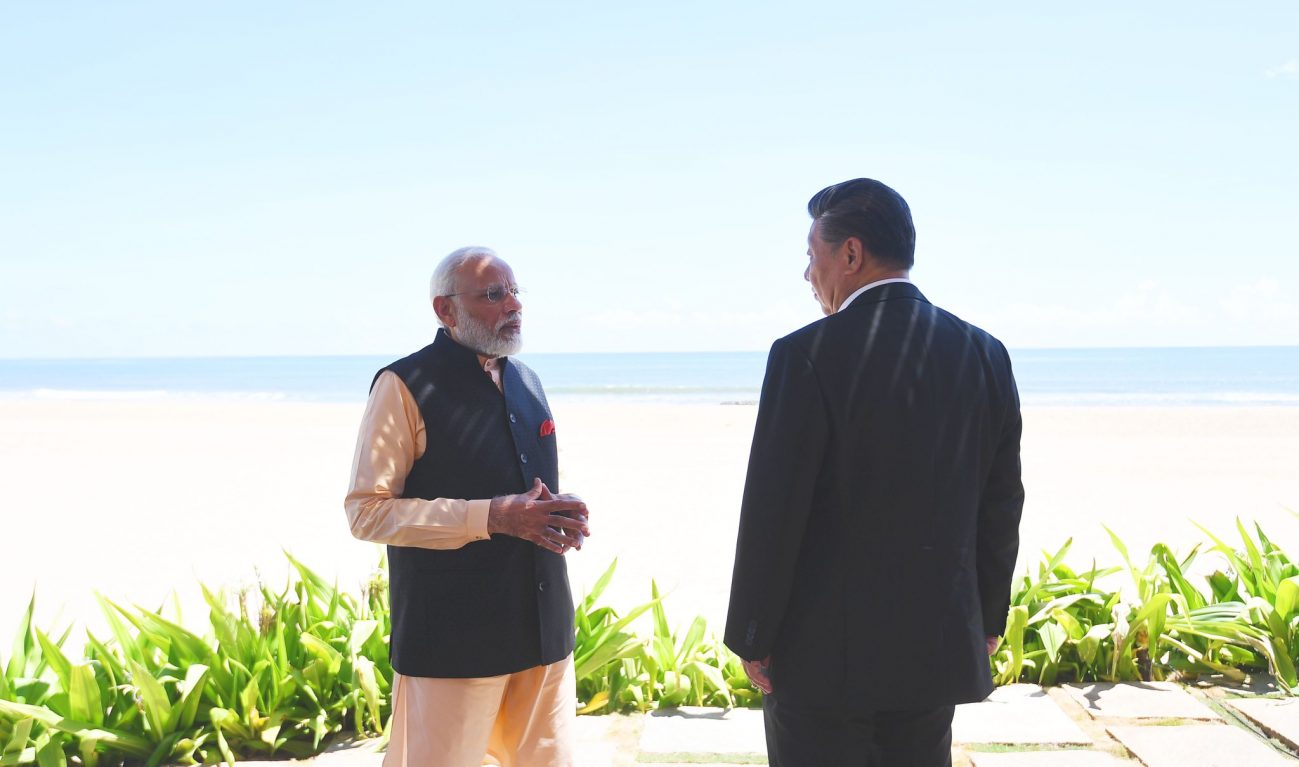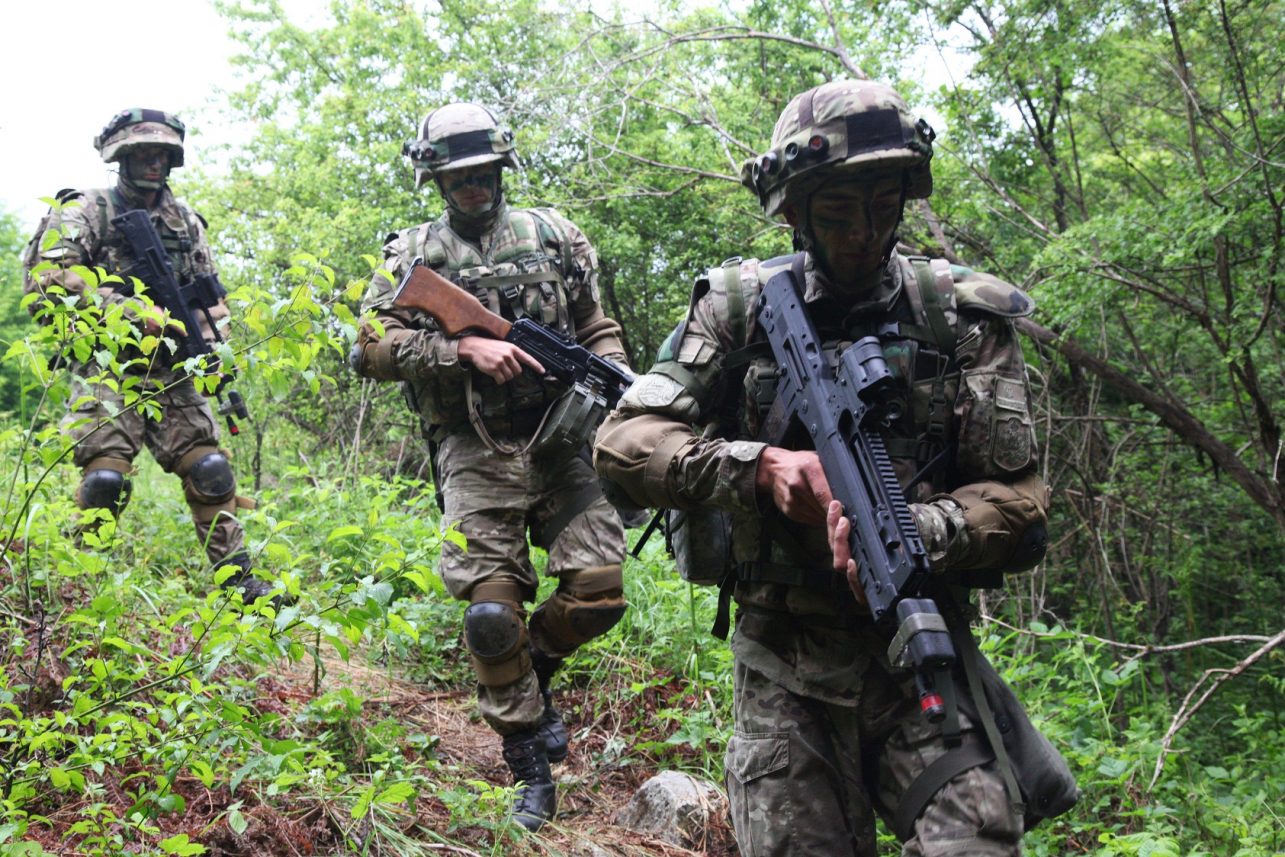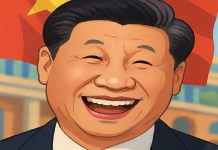The Line of Actual Control (LAC) dividing the two nuclear-armed nations, India and China, passes through the landlocked 135 kilometers (84 miles) long, boomerang-shaped lake, which is six kilometers (3.7 miles) wide at its broadest point.
One-third of the lake falls under Indian territory, while the remaining area is under Chinese control. The western end of Pangong Tso Lake lies 54 kilometers (33 miles) southeast of Leh, the central city in the Ladakh region.
Have the military and civilian talks between the two countries helped reduce the tensions exacerbated by their build-ups along the LAC and added to the anxiety among nomadic residents in Chushul and other villages?
Last year in January, India disclosed that China had built the first bridge over the lake in an area illegally occupied by China for nearly seven decades.
The second bridge and “other Chinese encroachments” into the 45-kilometer-long (28 miles) Skakjung pastureland in the Demchok-Koyul sector in Ladakh have snatched their sense of safety and rights over that land owned by the nomads for generations.
Indirect Victims Of The India-China Dispute
A big issue that has not been addressed by the warring sides so far and is of vital importance to the local people in these Himalayan heights and plateaus is the loss of grazing ground for the cattle of these villagers.
The cattle wealth is the only source of income for them, but because the grazing fields have been rendered disputed or war-torn, they have become indirect victims of the ongoing fighting between the troops of two countries.
Nomadic tribes such as the Changpas living in the sector’s villages – Dumchele, Demchok, Chumur, Tsaga La, Koyul, and Loma – say they are losing access to grazing lands, which are already shrinking since the conflict intensified in 2020.
Two years later, the people in Chushul say they risk dying in war or starvation. Ishay, a Ladakhi, says that even after the India-China War of 1962, herdsmen were allowed to move beyond Rezang La towards Mukhpari and Khaplang, despite these areas being near Spanggur post, a mountain pass on the LAC.
“Before the clash, we traveled beyond Gurung Hill (a mountain near LAC) and spent days there to herd the cattle. But the Indian soldiers now forbid us from grazing our cattle even in the land under Indian control,” Namgyal Phuntsog, 49, who belongs to the Changpa tribe, told the correspondent of a news channel.
“And when we ask for our grazing rights on those lands, they make pretexts to avoid us. In such a situation, it’s tough to survive,” said Phuntsog.
The lack of access to grazing lands has forced many nomads to sell their cattle. Phuntsog said he has sold almost 100 sheep in two years and can barely feed the rest.
“Today, we cannot go up to our pasturelands in Dumchele. In the past, we traveled beyond the disputed Demchok sector for cattle grazing. Currently, China deprives us of access to grazing land in Dumchele and areas such as Kigunaru, which are now under Chinese control,” he asserts.
Sonam Paljor, another Changpa nomad in Chushul, said for the last three years, he has been returning from Dumchele without being able to feed his cattle. “Neither our lives nor our livelihoods are safe. Cattle herders are selling their livestock and leaving Chushul. If our interests are not protected, mass migration might empty this village, indirectly helping the Chinese,” he told the correspondent.
The locals also say the People’s Liberation Army is settling Chinese civilians in areas “snatched from India” and constructing military and other facilities. The nomads also point towards an absence of bunkers in places like Chushul and how it endangers their well-being in case of an armed conflict.

Hollow India-China Talks
Since the June 2020 clash, India and China have held talks through diplomatic and military networks. But even after 15 rounds of talks aimed at a mutually agreeable middle ground for the disengagement of forces at several points along the LAC, no breakthrough has been reached.
Tashi Tsephel, a retired Indian army officer and recipient of a bravery award, had served in Chushul, Demchok, and the Galwan valley. He told a correspondent that in the past, the Chinese maintained a minimal presence around Galwan. But it changed in 2019 when the PLA’s presence in the area “increased aggressively.”
“Over the years, Ladakhi nomads alerted the Indian Army whenever they sensed the PLA’s movement. Sending nomads is a good strategy since it helps us to square the upper reaches. This is exactly what the PLA is doing. It is establishing dominance by installing nomads in the disputed areas.” Tsephel added that the developments could be “damaging for India.”
“As of now, the PLA is installing nomads, tomorrow it could very well establish army bases there,” he said, adding that Ladakhi nomads, who are aware of the expanse of the grazing areas in the frontier region, should be allowed to herd their cattle.
“This could help India acquire a stronghold in the disputed areas,” he said.
Despite their loyalty towards India, the nomads say the Indian Army is not providing them with access to their land. As they watch the PLA “inch into the Indian territory,” they say they are pained by the Indian government’s “inaction” in the face of the Chinese “land “grab.” Amid uncertainty over their future, the nomads ask: “This is our land. Why should we leave?”

This is the ground situation at the LAC in Ladakh, where Indian and Chinese armies are standing with an eyeball-to-eyeball stance. There is a reason why I have adopted this rather unconventional piece of journalism. Let me elucidate.
In an event held in the third week of September in New Delhi to mark the 73rd anniversary of the founding of the People’s Republic of China, the Chinese ambassador in New Delhi, Sun Weidong, passed some remarks about the Sino-India clash over the LAC in Ladakh region.
He reiterated China’s assertion that issues that cannot be immediately resolved should be put in a “proper place” without allowing them to disturb the overall development of bilateral ties. He said that the situation on the India-China border is “overall stable,” and the two sides have moved from the “emergency response” that followed the clash in Galwan Valley in June 2020 to “normalized management and control.”
He meant to convey that India should allow China to continue with the illegal occupation of some Indian posts and territories since the 1962 War and continue talking to China on other matters.
This is a highly selfish suggestion. He is not talking about vacating the illegally occupied part of the land and returning to a natural boundary between the two neighbors.
The Indian Ministry of External Affairs gave an apt answer which reflects the ground situation when read between the lines. India has never recognized any right of Pakistan to the illegally occupied part of Kashmir.
Indian External Affairs Minister S Jaishankar recently said that India-China relations are going through a challenging phase “because of Beijing’s actions on the border. It will be difficult to have an ‘Asian Century’ if the two countries don’t come together.”
India does not think the situation along LAC in the Ladakh region is stable. But the Chinese ambassador’s actual words are: “The situation on the India-China border is “overall stable” and the two sides have moved from the “emergency response” that followed the clash in Galwan Valley in June 2020 to “normalized management and control.”
This is contrary to the situation described in Chushul and other areas. From the Indian side, the situation along the LAC is to be gauged from the standards of an ordinary citizen of India along the LAC. If he is living in a state of uncertainty or is feeling a threat to his person and his cattle, if he has the compulsion to abandon his ancestral home and village and shift to some unknown and inhospitable environs, that does not speak for the “overall stability of the situation” as the Chinese ambassador would like us to believe.
It is a typical double-speak on the part of the Chinese, which is the phrase Nehru used while commenting on China’s betrayal in 1962. The Indian External Affairs Minister has rightly and lucidly said that without peace and tranquillity along LAC, Sino-Indian relations could not improve.
With the Karakorum Highway and the CPEC passing through the part of Gilgit and Baltistan region — the India Territory illegally occupied by Pakistan and China or ceded to China by Pakistan over some deal – in her kitty, Beijing comes forward with some munificent words and asks India to keep the core issue in cold store and talk about peripheral matters.
China is not interested in resolving the border issue because it has no intention of returning to the illegally occupied Indian territory. At the same time, it intends to grab more through muscle power.
Indian Parliament has unanimously resolved to take back the Territory of the erstwhile State of Jammu and Kashmir, which Pakistan has illegally occupied, and allowed China to carry forward its dangerous missions across that territory.
- Padma Shri KN Pandita is the former Director of the Centre of Central Asian Studies at Kashmir University. VIEWS PERSONAL OF THE AUTHOR
- Mail EurAsian Times at etdesk(at)eurasiantimes.com
- Follow EurAsian Times on Google News




